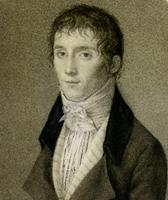Tuesday, 18 December 2012
Monday, 10 December 2012
Panarama
Friday, 30 November 2012
Self-Portraits
My self-portraits were fairly basic; I showed some of my calmer, simple side. I personally like the multiple exposure pictures better because I was able to add some personality to it, along with play with some textures
Wednesday, 28 November 2012
Portraits
Sunday, 4 November 2012
Beauty
1 how would you define beauty in photography?
To me, beauty is being captured by the picture. Feeling like your there, in the scene, or feeling the same emotions of a person in a portrait. Being drawn in by the colors
2. What are the characteristics of photographic beauty?
Lighting, colors and their contrast, positioning, uniqueness, and if the picture tells a story
3. Can something ugly be photographed and made beautiful? Why and how?
Yes, anything can be made beautiful if the photo is taken right. It just depends on perspective. For example, macro pictures can make anything look different, something gross might look completely different and amazing up close.
To me, beauty is being captured by the picture. Feeling like your there, in the scene, or feeling the same emotions of a person in a portrait. Being drawn in by the colors
2. What are the characteristics of photographic beauty?
Lighting, colors and their contrast, positioning, uniqueness, and if the picture tells a story
3. Can something ugly be photographed and made beautiful? Why and how?
Yes, anything can be made beautiful if the photo is taken right. It just depends on perspective. For example, macro pictures can make anything look different, something gross might look completely different and amazing up close.
Thursday, 1 November 2012
Tuesday, 30 October 2012
Wednesday, 17 October 2012
My Macro
I really enjoyed taking these close up pictures because it gives pictures a different perspective. The way that some of pictures have blurred backgrounds really emphasize the detail of the image. My favorite is the paintbrushes because the colors are so vibrant and the detail in the bristles are very well defined.
Wednesday, 10 October 2012
Tilt Shift
Go wolves! Had a great run during our volleyball game vs Tigard last night! This picture is cool because look at how little the players look! :)
Just some random cows next to Jergins park...don't they look like little plastic toys in the field?
My mom wanted to be my first experiment with tilt shift :) She was amazed at how unreal the picture turned out!
I thought that this picture was cool because of the way the lighting was really dark on the top and bottom, and the middle was well lit, making Cody and Jeff look tiny.
Tuesday, 9 October 2012
Brownie Camera
1. What is a Brownie Camera?
A brownie camera is a cheap, easy to use, black box camera. It uses film and a picture is taken with the click of a button, with the camera held at the waist.
2. Who invented it, and when?
The Eastman Kodak Company first introduced the Brownie camera in 1900.
3. How did it change society, and of course, the photography world?
Because the price of the Brownie camera was so low, many more people were able to purchase them. The film was also easier to get developed, so people wouldn't have to spend so much money on materials for development. The Brownie camera was super easy to use, so marketers targeted mainly children. Before, photography was expensive and left to the professionals, but with the Brownie camera, millions of people could take pictures whenever they wanted, at whatever event they chose, for little to no money.
A brownie camera is a cheap, easy to use, black box camera. It uses film and a picture is taken with the click of a button, with the camera held at the waist.
2. Who invented it, and when?
The Eastman Kodak Company first introduced the Brownie camera in 1900.
3. How did it change society, and of course, the photography world?
Because the price of the Brownie camera was so low, many more people were able to purchase them. The film was also easier to get developed, so people wouldn't have to spend so much money on materials for development. The Brownie camera was super easy to use, so marketers targeted mainly children. Before, photography was expensive and left to the professionals, but with the Brownie camera, millions of people could take pictures whenever they wanted, at whatever event they chose, for little to no money.
Monday, 24 September 2012
Nicéphore Niépce
Niépce was born March 7, 1765 and lived until July 5, 1833. He worked as an inventor which led to him becoming the first person to produce a photograph using a camera obscura.
 |
| First found photograph taken by Nicéphore Niépce |
 |
| Nicéphore Niépce |
This picture is famous for being the earliest known photo, taken by a camera obscura. Niépce figured out how to create a light sensitive paper that would darken when light touched it, also known as bitumen. In this particular image, there is a scene of nature outside of a window at Le Gas, taken in 1826 or 1827. I like this picture because of the different shades of grey and black. The buildings are lit on both sides because the photo had an 8 hour exposure time, so the sun shifted while the picture was being taken. The photograph is now being kept in the Harry Ransom Humanities Center.
Subscribe to:
Posts (Atom)













































